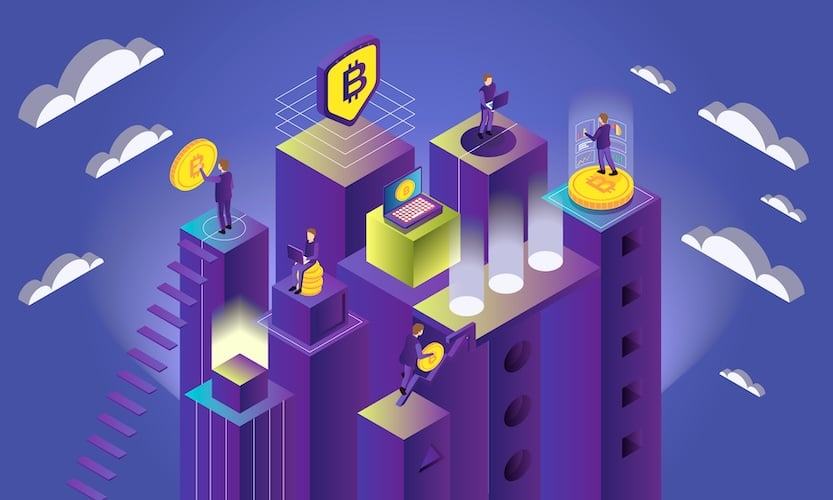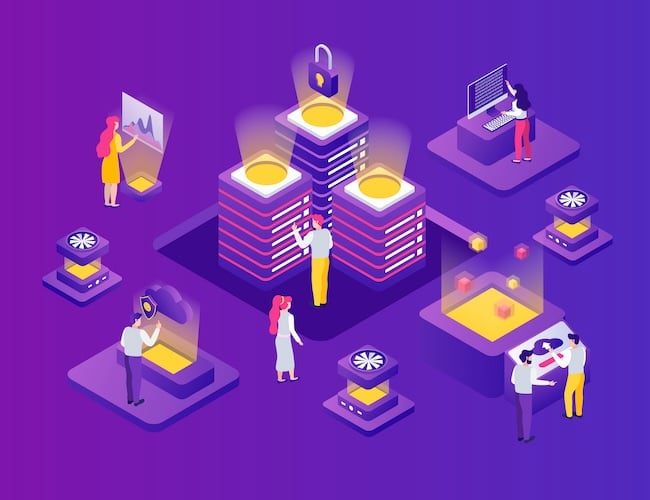Introduction
For decades, traditional banks have served as the central pillars of the financial system, offering services such as savings, loans, payments, and wealth management. These institutions act as intermediaries, trusted to store value and facilitate financial interactions. However, the emergence of Decentralized Finance (DeFi) is challenging this model at its core.
DeFi represents a revolutionary shift in how financial services are created, accessed, and distributed. Built on blockchain technology, DeFi eliminates the need for centralized entities by using smart contracts — self-executing pieces of code that automatically enforce agreements without human oversight. Platforms such as Ethereum, Solana, and BNB Chain have become the foundation for a growing ecosystem of decentralized applications (dApps) that replicate — and in many cases, enhance — traditional financial services.
As DeFi continues to grow in scale, innovation, and adoption, it is fundamentally altering the competitive dynamics of global finance. This article explores how DeFi is reshaping the traditional banking landscape, where the greatest challenges and opportunities lie, and what the future might look like in a financial world where decentralization is no longer a fringe concept.
1. What Is DeFi and Why Is It Growing So Quickly?
1.1 Key Features of DeFi
DeFi platforms offer a wide array of financial services without relying on banks, brokers, or clearinghouses. Key features include:
- Permissionless Access: Anyone with a crypto wallet and internet connection can access DeFi platforms without needing approval or credit checks.
- Composability: DeFi protocols can be combined like building blocks (“money Legos”), enabling rapid innovation.
- Transparency: All transactions are recorded on public blockchains, providing auditable and verifiable data.
- Non-Custodial Services: Users retain control of their assets, reducing dependency on third parties.
- Global Reach: DeFi platforms are inherently borderless, enabling instant, low-cost transfers and interactions worldwide.
1.2 Growth Metrics
- Total Value Locked (TVL): DeFi’s TVL, which reflects how much crypto is being used across DeFi protocols, peaked at over $250 billion in late 2021 and remains a major indicator of adoption.
- Protocol Diversity: From lending platforms like Aave and Compound, to decentralized exchanges (DEXs) like Uniswap, to synthetic asset protocols like Synthetix, DeFi is evolving rapidly.
- User Base: Millions of unique wallets interact with DeFi platforms, and usage continues to expand, particularly in regions with underdeveloped financial infrastructure.
2. DeFi’s Disruption to the Traditional Banking Model
2.1 Lending and Borrowing Without Banks
Traditional banks rely on credit scoring systems, loan officers, and regulatory frameworks to issue loans. In contrast, DeFi uses over-collateralization and smart contracts to allow users to borrow against their crypto assets in real time. Interest rates are algorithmically determined, and the process is automated and trustless.
This presents a direct challenge to banks’ consumer lending and microfinance services. DeFi loans are faster, global, and transparent — and they don’t require human intermediaries or paperwork.
2.2 Payments and Remittances
Bank-driven payment systems, especially cross-border transactions, are slow and expensive, often involving multiple intermediaries. DeFi enables instant global transfers using stablecoins (e.g., USDC, DAI) with minimal fees and no bank involvement.
This threatens banks’ foreign exchange, wire transfer, and payment processing services, particularly in developing nations where access to traditional infrastructure is limited.
2.3 Savings and Yield Generation
In DeFi, users can earn yield by providing liquidity to decentralized exchanges or lending their assets to protocols. These interest rates are often significantly higher than those offered by traditional banks due to lower overhead and the absence of intermediaries.
This makes DeFi attractive to crypto-savvy investors and threatens traditional banks’ savings and deposit services, particularly among younger, digitally native demographics.
2.4 Asset Management and Wealth Services
With the rise of algorithmic trading strategies, decentralized hedge funds, and automated yield aggregators (e.g., Yearn Finance), DeFi is encroaching on the territory of private wealth managers and investment advisors. These tools democratize access to strategies once reserved for institutional clients.
3. Challenges DeFi Poses to Traditional Banks
3.1 Loss of Market Share
As users migrate to DeFi for loans, savings, and payments, banks risk losing significant market share, particularly among tech-savvy consumers and small businesses. The appeal of higher yields and instant services can lure customers away from conventional banking products.
3.2 Disintermediation
DeFi protocols do not rely on centralized infrastructure. This removes the bank from its traditional role as a financial intermediary. If capital flows directly between lenders and borrowers via smart contracts, the bank becomes unnecessary in that transaction chain.
3.3 Innovation Gap
Banks often move slowly due to regulation, legacy systems, and risk aversion. DeFi, by contrast, moves at the speed of open-source development. New products are created, tested, and deployed in weeks — a pace banks struggle to match.
4. How Traditional Banks Are Responding
4.1 Exploring Blockchain and CBDCs
Many banks and central banks are investing in blockchain R&D. Central Bank Digital Currencies (CBDCs) are a key area of exploration, potentially offering government-backed digital currencies that combine blockchain efficiency with regulatory oversight.
4.2 Building Partnerships with DeFi Protocols
Some forward-thinking institutions are beginning to partner with or invest in DeFi projects. For example, banks are exploring tokenized assets, custody solutions, and on-chain compliance frameworks to bridge the gap between traditional finance (TradFi) and DeFi.
4.3 Regulatory Pushback and Lobbying
Banks are also advocating for stricter regulation of DeFi, citing risks like money laundering, consumer protection, and market manipulation. Striking a regulatory balance will determine whether DeFi and banks compete, coexist, or converge.

5. Future Outlook: Competition, Coexistence, or Convergence?
5.1 Scenario 1: DeFi Replaces Banks
In a fully decentralized world, banks may lose their dominance as DeFi replaces core banking functions. This scenario is more likely in regions where banking systems are weak, or where consumer trust in institutions is low.
5.2 Scenario 2: DeFi and Banks Coexist
A more likely outcome in the short term is coexistence. Banks could focus on institutional clients, large-scale lending, and fiat custody, while DeFi dominates peer-to-peer services and crypto-native assets. Hybrid products may emerge that blend DeFi infrastructure with bank-grade compliance.
5.3 Scenario 3: Banks Embrace DeFi Principles
In this scenario, traditional banks evolve by adopting DeFi technologies. They may integrate smart contracts, offer tokenized deposits, or create permissioned DeFi platforms. Institutions that fail to adapt may lose relevance in a digital-first economy.
Conclusion
The rise of DeFi is not just a trend — it’s a paradigm shift. By removing intermediaries, reducing friction, and empowering users, DeFi redefines what financial services can be. While traditional banks are unlikely to vanish overnight, their role is under intense pressure to evolve.
The next decade will likely see a reimagining of financial services, where centralized and decentralized systems either compete fiercely or find ways to integrate. For traditional banks, survival will depend on their ability to embrace innovation, collaborate with decentralized ecosystems, and rethink their value propositions in an open, blockchain-driven world.
DeFi has shown what finance can look like when code, not corporations, is the infrastructure. Whether traditional banks see that as a threat or an opportunity will determine their place in the future of finance.
















































